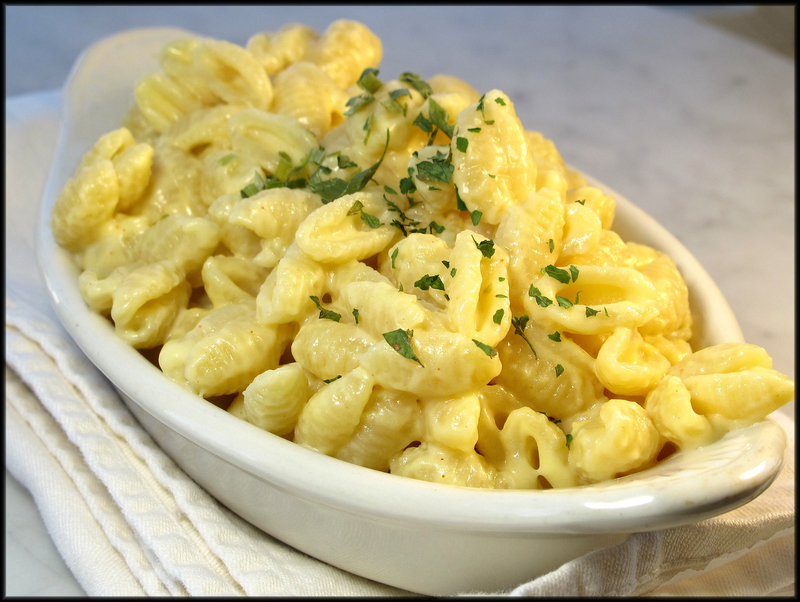During the recent spate of miserable weather, we elected to stay inside and eat comfort food. First on the list (primarily because we had all the necessary ingredients) was macaroni and cheese. A familiar dish to everyone, especially those who favor the Kraft version that comes in a blue and white box, versions of macaroni and cheese have been around for centuries.
One of the earliest written set of cooking instructions published in England appeared in the 14th century (Forme of Cury). This collection included a recipe for thin pieces of boiled dough layered with cheese and butter. This was more like lasagna than the current form of elbow macaroni and cheese sauce, which was a later modification.
In this country, the popular urban legend is that Thomas Jefferson invented macaroni and cheese. More than likely, he simply imported the recipe, having encountered the dish while serving as the ambassador to France in the late 18th century. And, when he returned to the United States, he imported a pasta machine and a collection of noodle recipes.
According to those who attended the event, President Jefferson served a “pie called macaroni” at a state dinner in 1802. It would have resembled the dish described by Mary Randolph in her cookbook, The Virginia Housewife. She directs the cook to boil macaroni sheets and layer pieces in a baking dish with cheese and butter and then place it in an oven until browned. This would form a dense block that could easily resemble a pie to be sliced and served.
The biggest change in the appearance of macaroni and cheese derived from the machine-era ability to form different pasta shapes, most notably the elbow and other smaller designs aptly suited to collect the rich sauce in ridges and curves. Another change from the recipe Jefferson used was to replace Parmesan cheese with Cheddar, increasing the creaminess.
A major shift in macaroni and cheese may be attributed to the Kraft Food Company, which introduced the blue-boxed kit in 1937. In the midst of the Great Depression, this quickly became a best seller, offering an inexpensive, easy-to-prepare, nutritious meal for a struggling family. Still popular today, many children (and starving college students) prefer the packaged version to homemade macaroni and cheese.
As with any basic recipe, the opportunities for embellishment and personalization are limitless. The internet offers any number of options for additional and substitute ingredients, including Velveeta (a cheese-like processed food), cream of chicken soup, powdered onion soup mix, salsa, steamed broccoli, cream cheese and the ubiquitous buttered-bread-crumb topping.
If you’re planning to experiment with the basic macaroni and cheese recipe (seen in the photo and recipe below) there are a few things to keep in mind. First and foremost, the type of cheese matters. Convenience packages of shredded and grated cheese have been treated with anti-caking agents that also serve an anti-melting function; grate your own cheese.
Overbearing cheese flavors like those in bleu or gorgonzola are better suited as crumbles on a salad or in a compound butter, not in macaroni and cheese. Mixing more than one cheese is fine, so long as the combination makes sense, for example, Emmentaler and Gruyere will make your humble mac and cheese rise to the heights of fondue. Do not use too much flour in your white sauce or you will find the texture too doughy. Instead of the typical two tablespoons of flour, I prefer to use only one.
Finally, trying to “lighten” macaroni and cheese will not go well, as the white sauce at its heart will not thicken if you don’t use ingredients with some amount of fat in them. The combination of flour, butter and heat is what allows the creamy sauce to thicken and deliver its luxurious mouthfeel.
Basic Macaroni & Cheese
8 oz pasta*
2 T butter
1/2 t onion flakes
1 T flour
1/2 t Dijon mustard
1/4 t paprika
1 C milk
2 C grated cheese**
salt & pepper, to taste
parsley or chives for garnish
Cook pasta according to directions on the package for al dente texture. Meanwhile, melt butter in a large saucepan over medium low. Add the onion and cook for a minute or so. Stir flour into the butter to make a roux; cook until golden. Add mustard, paprika and milk; stir until smooth and there are no lumps in the mixture.
Stir in cheese and cook until cheese has melted completely, stirring continuously. Drain pasta and add to the cheese mixture. Adjust seasonings and garnish.
*choose a pasta with shape and texture to ensure sauce adheres
**choose a good melting cheese, such as Cheddar or Gruyere
Baked Macaroni & Cheese
8 oz pasta
2 T butter
1 C fresh bread crumbs
2 T grated Parmesan cheese
2 T butter
1 t snipped chives
1/2 t mustard powder
pinch cayenne
1 T flour
1 C milk
2 C grated cheese
Preheat oven to 375 F. Coat the inside of a baking dish with nonstick cooking spray; set aside. Cook pasta according to directions on the package for al dente texture. Meanwhile, melt the first 2 T butter in a skillet. Add bread crumbs and toss to coat.
Stir in Parmesan cheese; set aside. Melt 2 T butter in a saucepan over medium low. Add flour to make a roux and cook until golden. Mix in chives, mustard, cayenne and milk; stir until smooth. Add cheese and stir until melted. Drain pasta and combine with cheese sauce in prepared pan, stirring until coated completely. Sprinkle bread crumb mixture over top. Bake until crisp and lightly browned, about 20 minutes.
Send comments, questions or recipe ideas to capeflavors@comcast.net.






















































